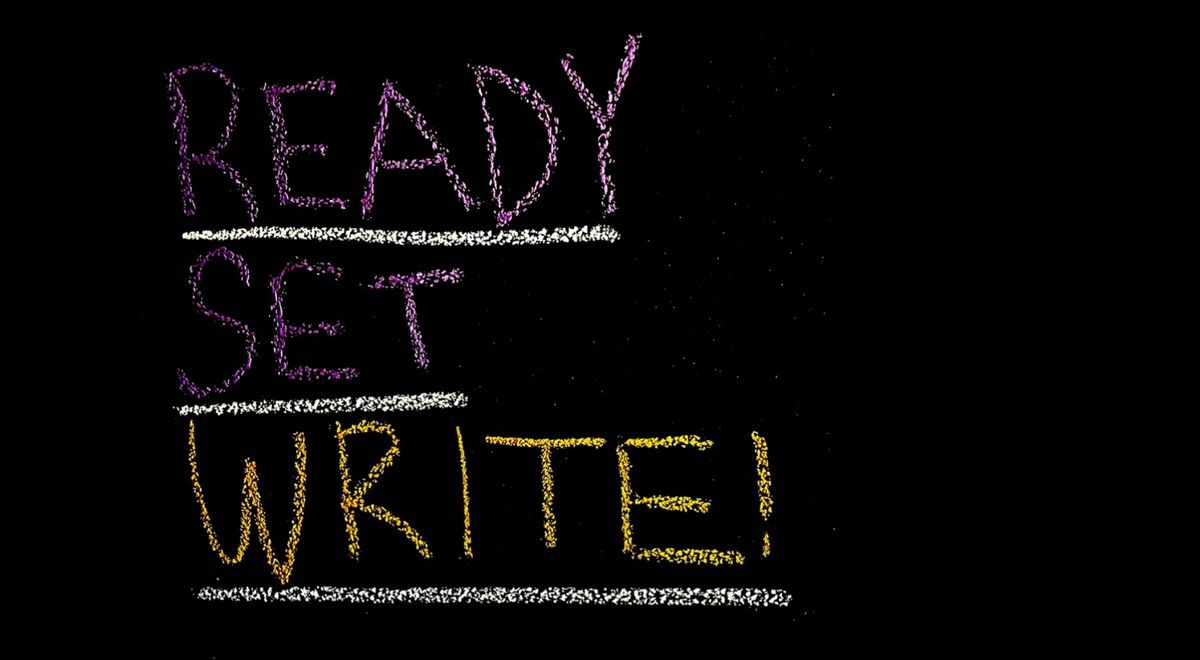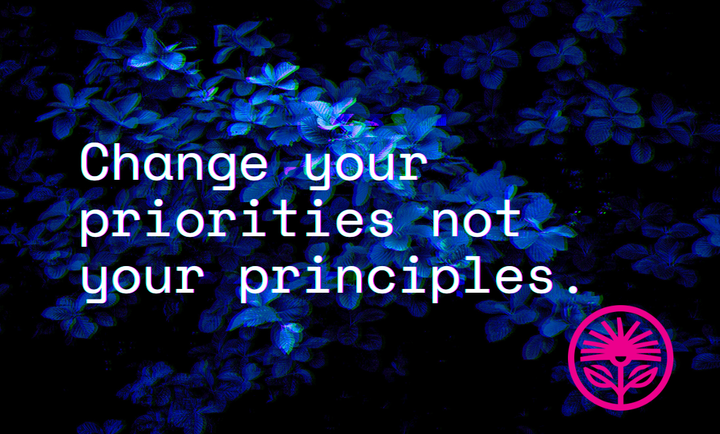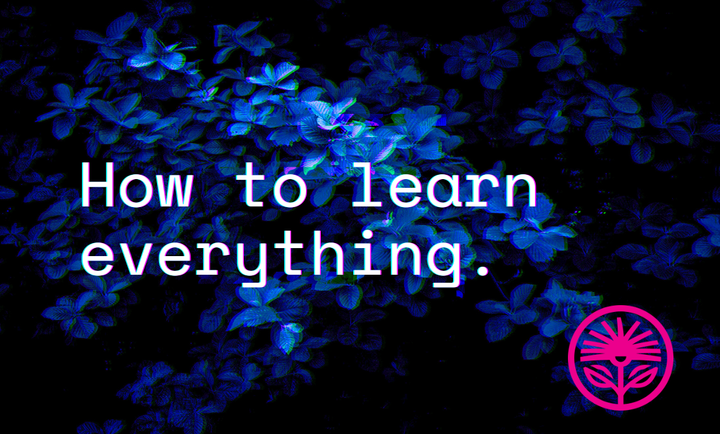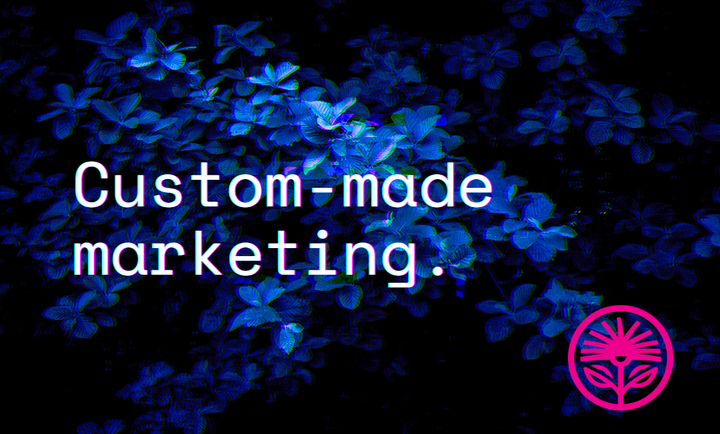Framework: Fill-in-the-Blanks Content Writing
We’re going to jump past all the theory and do a content writing fill-in-the-blanks exercise.

Note: Below today’s framework is an update on how I’ve used January’s Small Actions, Big Planner framework to break through my own procrastination wall.
Last week we introduced News, Nope, and (K)Nowledge, the “Three Ns” of marketing content.
Basically, these are three broad categories for content that have built-in appeal and can get you writing real content for your business instead of agonizing over a blank screen or text field.
Today, we’re going to jump past all the theory and do a content writing fill-in-the-blanks exercise. That’s right, open up a text editor or grab a pen and paper and follow along as we write some simple content for your business.
For each heading below, write down what’s true for your business. Just in case you want to grab a screenshot/printout of this page and fill it in that way, I’ll leave a blank spot under each example for you to write.
Content Background
Business type
Broadly, what kind of business are you in?
A: B2B SaaS product.
B: Independent consultant.
C: Brick-and-mortar retail.
You:
Chosen content medium
Where is this content going to go?
A: Trade show banners.
B: LinkedIn posts.
C: Short-form videos (Reels, Shorts, etc.).
You:
Primary target audience
Who's going to actually see your content?
A: Corporate procurement officers.
B: Potential clients.
C: Current customers.
You:
What do they want at the moment they see your content?
What did they come to this place/app/medium to get? (It probably wasn't marketing messages)
A: Something of VALUE from their conference attendance they can take back to their job (to demonstrate the value of having gone).
B: Something of VALUE from killing time on LinkedIn (to demonstrate the value of having spent time there).
C: Something of VALUE from leisure/boredom time on their phone (to demonstrate the value of mindless scrolling).
You:
When in their life are they mostly likely seeing it?
What's the current state (physically, emotionally, socially) of the person seeing your content?
A: When they’re bored, tired, or hungry as they wander through the conference hall.
B: When they’re bored, busy (potentially posting their own content), or passively job hunting.
C: When they’re looking to be surprised, entertained, or educated as they kill time.
You:
What overlapping values do you and your target audience share?
What do you focus on that your best customers appreciate most?
A: Obsessed with standards and reliability.
B: Unafraid of change and newness.
C: Prioritizing customer service.
You:
What’s the one thing you’d like them to know, right now?
If you could only tell your audience one single thing to express your primary value, what would it be?
A: You can count on us when you need us.
B: I don't offer the same old crap you’ve seen everywhere else.
C: We’ll keep at it until we get it right.
You:
What’s something they’d actually want to do after seeing your message?
Maybe they'll want to buy right now, but, more likely, they'll want more content from you—how can they get it?
A: Sign up for a newsletter packed with immediately useful information.
B: Follow or connect on LinkedIn, in anticipation of new and novel ideas.
C: Watch the video to the end and let the algorithm do the rest.
You:
How can you stand out in this environment?
You know who you're talking to and what they want—but how can you get their attention in a sea of competing messages and brands?
A: Be short, to-the-point, and immediately useful, demonstrating your ability to anticipate your ideal customers' needs.
B: Demonstrate the utility of the new and novel by creating content that looks and feels different from the prevailing trends.
C: Demonstrate your passion for getting things right by showing the behind-the-scenes fun/excitement/surprises of running your business.
You:
“NEWS”
Content that is about something new that's happened in the world, your industry, or your business—and how your expertise relates.
Concepts
What's a basic idea you could explore?
A: Explain or address a confusing industry news item in a single sentence.
B: Create a content serial that contains novel information in each individual post, while building toward a large, multi-post point.
C: Show the funny/bewildering behind-the-scenes of trying to keep up with new trends that affect your business.
You:
Content Examples
With your concept in place, and all the above information about your audience and what they want (and how you can provide it), write some (rough!) content examples.
A: One pull-up banner is filled, almost top-to-bottom, with dense and tiny legalese. Underneath the block of text is a large copy line that says, “If you know what this means,” while a second banner next to it simply says, in large copy, “you’ll want to know we took care of it in version 5.0” with a (short!) URL that redirects to your newsletter signup page. On that page, you explain your philosophy on reliability and promote your newsletter.
B: Your first post is an extremely short summary of a recent industry news item. Once summarized, though, the post continues. “I don’t think that’s the whole story, though,” you write. “In fact, I think this is part of a bigger trend that’s been building for a long time. I guess we’ll see—back here tomorrow.” Then, each business day for two-to-three weeks, explain your perspective on the industry and why it needs to update and evolve, written like a serialized drama.
C: A slightly embarrassed confessional: “Okay, so, a customer came in and asked for a [PRODUCT YOU DON’T CARRY] and honestly I’d never heard of it. Here’s what it turns out that is: [EXTREMELY BRIEF SUMMARY]. If you’re looking for one, we do not have them. But [FRIENDLY ALTERNATIVE TO YOU] does!”
You:
“NOPE”
Content that is surprising, contrarian, or outside of the contextual norms.
Concepts
A: People get loaded up with junk as they wander through conference halls and trade show booths, so you’ll play off of this and counter-position against everything else.
B: Make a post so obscure, so personalized, that the small number of people the algorithm shows it too will find it eerily accurate to their situation.
C: Don't try to be cool, but try to show that you don't have to be to do great work—by showing how you're doing just that.
You:
Content Examples
A: Your first banner says, “We didn’t bring a single pen.” as large as you can make it, so it can be seen from as far away as possible. The banner next to it simply says, “Reliability, light as a cloud. Sign up to carry less: [NEWSLETTER SIGN-UP URL]”
B: Your post says, “I’m not breaking this up into a series of short sentences and lines—in fact, this sentence is going to carry on a fair bit longer than would be algorithmically ideal. But isn’t some variety a breath of fresh air?
This paragraph isn’t building to a point, it’s just filler to give your eyes a break as you scroll. You can skip to the next paragraph, if you’d like, where there’s some real content again, or just hang on and see where this goes. Ah, here we are, at the end of this paragraph, and ready to head into the next.
If you’d like a break from everything else, feel free to connect with me here. I’d love to send you a spammy follow-up DM the moment you click Connect.
I’m kidding.”
C: “Okay everybody, here’s the weekly trend report: I don’t know what [CURRENT MEME] means, but let me know if we should be stocking it. All right, that’s the weekly trend report. We’re trying.”
You:
“NOWLEGE”
Content that educates, demonstrates, or motivates.
Concepts
A: Provide one single fact they should take back with them to the office.
B: Share content from new and leading edge thinkers and practitioners in spaces adjacent to yours, with commentary.
C: One simple fact that would negate a growing trend related to your industry/business/interests.
You:
Content Examples
A: Your first banner says, “This banner stand cost us $499, because we got the good one without the fiddly screws you always lose.” Your second one says, “And we bought a second one, just in case. Love reliability too? Sign up to read more: [VERY SHORT URL]”
B: [Re-post of thoughtful, novel content], with your commentary, along the lines of: “What’s so important about this is that it means that [CURRENT TREND] is going to be awfully short-lived. Here’s what I’m thinking comes next: [YOUR UNIQUE PHILOSOPHY/INSIGHT ON YOUR INDUSTRY]”
C: “Okay, I know that [CURRENT MEME/TREND RELATED TO YOUR INDUSTRY] is blowing up, but absolutely do not do it. Okay, that’s it for today! See you tomorrow, and in the meantime, don’t do, say, copy, or think about anything you see on this app!” You’ll be able to do this every single day, for as long as you want, for as long as the internet remains largely awful.
You:
That's it! Ready, Set, Share!
Hopefully you’ve got a couple things written down. If you love what you’ve written, that’s great! If you don’t, that’s more likely. This is first draft territory, and everyone who writes for a living knows that first drafts are where you gather the ingredients for the real writing to come.
So play around with your ideas. Edit, rewrite, reconstruct. And try things out until it feels right, and feels like it’s writing itself. But most importantly, send me what you've written! I'd absolutely love to read and discuss it. Email me your content examples at labs@kelfordinc.com.
Small Actions, Big Planner Update
The frameworks I build and share here on Kelford Labs are always, primarily and initially, made for Leah and me to use in our consulting. That’s partially why you can trust them to be useful—we use them ourselves. But that also means I’m often making these to help me overcome something I’ve been struggling with myself.
In January, for instance, I was pretty frustrated with myself. My reading process goes like this: I read every morning and take notes and make highlights. After I’ve finished a book, I go back and transcribe the sections I’ve highlighted. Then I tag and organize the quotes so I can easily remember and recall them. It’s how I’ve built a personal database of almost 4,000 quotes and frameworks from everything I’ve read over the past few years.
But if I don’t actually transcribe and tag the quotes, the whole system falls apart. And the backlog can get intimidating. A few months of procrastination and I’m staring down a growing stack of books I’ve read but not transcribed or tagged.
For a large part of last year, I kept kicking the can down the road, planning to have “One Big Day” to get them all done, or at least make a dent.
But of course I didn’t, and kept not doing it.
Until finally I accepted the truth: Nothing important gets done all at once. Instead, it’s got to be a process.
So I constructed the Small Actions, Big Planner (watch the video of Leah implementing it here).
I’m now two months into transcribing or tagging 10 quotes a day, every single work day, while I drink my coffee. I’ve made more progress in these past two months than in the many, many months before. And I feel great about it.
Progress breeds patience, and I’ve got plenty of both, now.
So if there’s something important you’ve been putting off, try out the Small Actions, Big Planner.
Get your important work off your back, and get it done.



